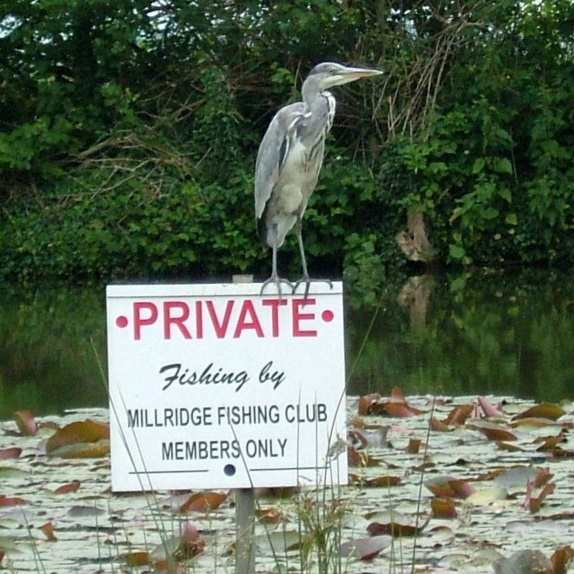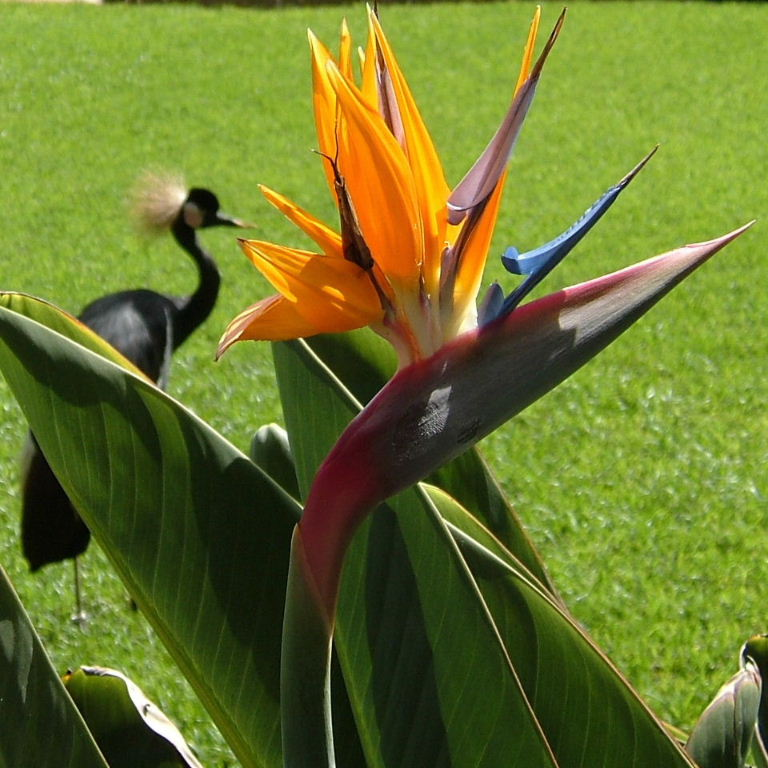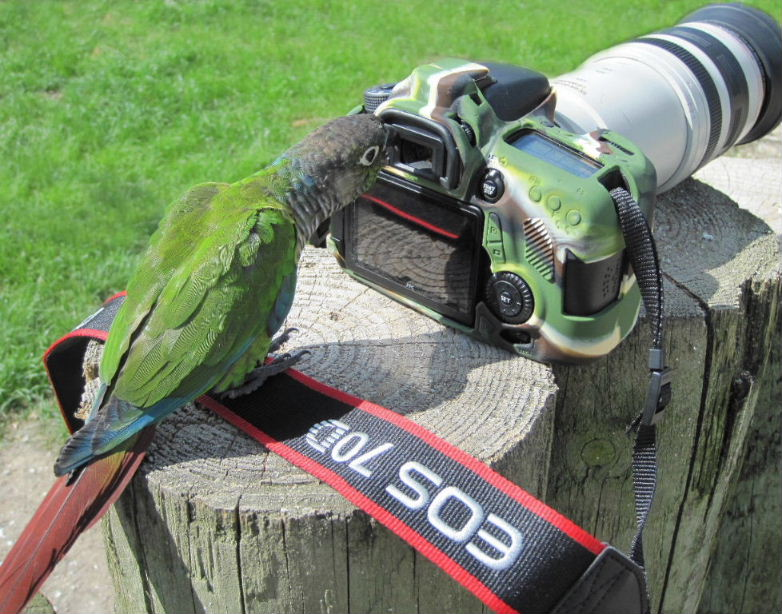“There is a saying, particularly apt for wildlife photography: the best camera is the one you have with you.”~ Elizabeth Barrett
She is the author of the book, “A Foreigner’s Guide to Moscow” (available on Amazon, http://www.e-barrett.com/page2.htm) and is as intent on her passions as she is humorous about them. Elizabeth Barrett’s book, for example, features Moscow’s tourist attractions with two consistencies — a stray dog or feral cat in the foreground, and quirky captions that only she can write. Her point-and-shoot compact camera with automatic settings and focus was perfect for the job.
Elizabeth worked in the energy industry, which sent her to Central Asia for two years, Russia for a few years, and other parts of the world, as well as her home, the UK. Upon retirement, her passion for animal and wildlife photography kicked in. Her website is https://www.animal.photos.
Her work was education-driven. A local school used her pictures, as did the local London Wildlife Trust group. She loves the educational value of animal photography. “[It’s] especially important for conservation and education,” Elizabeth says, adding, “the world continues to decimate wild animals and their habitats, polluting waterways, and engaging in the harvesting of rare animals for consumption, tourist and pet trades”.
Elizabeth’s goal in animal photography is to enable others to appreciate an animal for all that it is. One photo of an animal gives many people a feeling of affection for it. “If (stakeholders) are educated about the threats posed to sustainability, they’ll be motivated to address it progressively, either voluntarily or by legislation,” Elizabeth said.
A picture paints a thousand words. Seeing an animal in a photo can elicit empathy in some people. When shooting, Elizabeth looks for the moment, the fleeting glimpse where the story lies. This is what she’s after.

“I love seeing high-quality animal photographs”, Elizabeth says, “but it is much easier to take high-quality images in a studio where you can work on composition and lighting, such as for fashion or portraits. In wildlife, speed is most important and takes precedence.” Here are extracts from a Q & A that Pressenza had with Barrett:
- What is the one thing you wish you knew when you started taking animal photos?
The key thing I wish I had known when I started taking animal photos, was knowledge about the animal kingdom. I wish I knew how to identify the different animals I encountered – their species, the different birds, butterflies, and more. Later, I wished I knew more about their habits. This would have made them easier to plan to photograph. Slowly, I learned both aspects.
- As an animal photographer, what do you recommend regarding composition?
I prefer a natural background that excludes man-made objects unless they’re part of the story. But one can’t choose a prime location or background, animals live in a habitat that limits a photographer. Maybe one can induce a prancing horse to pose on a mountain top with a full moon in the background. But most wild animals will seek camouflage, like amphibians who love mud.

With wildlife photography, speed is often more important. Good composition also helps, such as getting the whole subject, whether that is the herd, animal, head, or just an eye, in the frame. For a moving animal or one looking sideways, the rule of thirds may be helpful, leaving a vacant third, half, or space for the animal to move or look into; however, sometimes it’s useful to include elements on opposite ends of the frame. The humor of a shot or its story sometimes dictates the composition, as illustrated here.

- What about lighting?
Photography is usually better with good lighting. However, I will almost never use flash on animals, whether wild, captive, or domestic. There will be rare exceptions for some night photography and/or invertebrates, eg moths). Also flash or continuous lighting will rarely reach a distant subject. Since wildlife shots most of the time require speed, and a fast camera shutter, this makes nocturnal photography especially challenging. With wild fauna, one can’t always choose the time of day for optimum sunlight. Some animals rest at midday and become active at dawn and dusk. Despite planning, it is often largely down to luck regarding the prevailing light and the animal’s appearance.
Having said that, lower light can often produce a more atmospheric picture. Too much light, sunlight, or artificial light can wash out colors and details.
- What camera settings do you recommend for animal photography?
For animals in varied situations, camera settings can’t be too prescriptive. Sometimes for speed and readiness, I use the pre-set sports/action setting on some cameras for wildlife, especially for birds.

- What do you suggest for post-processing?
I try to minimize post-processing, but today’s technology can be very useful to straighten up over-rotation and recapture some of the lost detail (washed highlights or just improving contrast). My main use of post-processing is to crop out the required subject (eg. a bird in flight) and to reduce the image size for the web.
- What camera and equipment would you recommend to beginners?
A heavy camera, long lens, or choice of lenses and lighting isn’t always practical “in the field” (or in your garage or friend’s kitchen). A compact camera or camera phone may allow you to take a photo rather than miss it. They say, “perfect is the enemy of good.” This is especially so with animals that move unpredictably.
Cameras and equipment in animal photography depend on the type of animal photography they want to pursue, their budget, and possibly their strength. If you want to photograph pets and/or captive animals, studio equipment (several cameras including video and sound, lenses, lighting, and a tripod) can be brought to the location.
For wildlife, a lot of heavy equipment isn’t necessarily better, even if you’re part of an African safari riding in a jeep with tripods, cameras, and lighting. It takes time to set up your equipment, and in the interim, you can miss the moment.
I use different lenses. For birds and mammals in the field, I have an SLR camera (currently Canon 90D) with a medium-long lens (100-400mm). It covers birds in flight, distant moving animals, relatively close butterflies on flowers, or large mammals. For insects and invertebrates, I use a macro or ultra-closeup lens.
A tripod takes a sharper, steadier image, but it takes more time to find your subject in the view-finder. Also at my age and strength, it’s heavy to carry for long distances. But you can set up a tripod from your kitchen window to photograph birds in the birdbath.
The use of lighting, a range of lenses, filters, and most other equipment is more convenient for studio work than for animals in the wild.
- What about macro for ultra-closeups?
For insects, especially to catch a bug’s compound eyes, insect wing patterns or veins, or just really tiny invertebrates that are hard to see with the human eye, I use a compact camera with a good macro setting. It’s also good for flower close-ups (and even to read the tiny print on items that are too small to read with my eyes). For me, the best results I’ve achieved with macro are from a (Canon) compact camera that fits easily in the pocket (so I can carry the big lens also). My “digital macro” allows one to zoom in on a tiny speck, and sees it much larger than life-size. Unfortunately, Canon stopped making that long ago in compacts. My new mobile phone (Samsung) has a good macro but not as good as the old Ixus. I have compared several other cameras against it over the years but the macro was never as good.
- What’s your favorite lens for animal photography and why?
My favorite lens is a Canon EF 100-400mm f/4.5-5.6L IS II USM. To quote Canon “A compact, high-performance 100-400mm zoom lens that’s ideal for those shooting sports, action and wildlife photography. A 4-stop Image Stabilizer and high-quality optics deliver superb sharpness.” I had its predecessor, Mark I, for many years and now use the Mark II for most regular wildlife/animal photography (except macro and night). It is versatile for most subjects, daytime light, and distances, but not for landscapes.
For “birding”, I will sometimes use the heavier (and vastly more expensive) “professional grade” (Canon’s words) Canon EF 200-400mm f/4L IS USM Extender 1.4x which has a built-in Extender increasing focal lengths to 280-560mm. This extra reach is useful for birds way out on a lake or far in the sky or on a distant treetop. Closer images do not seem the quality of the slightly smaller lens, but that may be because I tend to keep the extender activated, adding extra glass to the lens.
- What is the importance of animal photography today?
With wild animal populations in sharp decline globally, evocative photographs that people can relate to will help mobilize them to protect what we have left. (Once it’s gone, it will also be good to have a photo of what it was like when it was alive).

Photographs with some pertinent information will allow others to identify, love, and conserve wildlife. Most wildlife that is endangered or extinct in the wild has become that way through human activity: mainly through destruction or pollution of habitat, over-hunting, or over-harvesting (including over-fishing), but also through mass poisoning and deliberate extermination. The latter applies especially to the use of pesticides-killing insects and invertebrates which affect the whole food chain, meaning that birds, particularly nestlings, are starving and pollinators (bees and others) that we rely on for food have been massively reduced. Deforestation for human dwellings, resorts, industry, and agriculture has not only destroyed millions of hectares of habitat but has also fragmented and left unviable some of the remaining forests.
Eco-tourism is one way to counter poaching and bring income to areas that conserve wildlife. Conservation breeding is being conducted in zoos and wildlife parks, particularly for animals that are extinct in the wild and require habitat restoration. People must be educated so they’ll be motivated to rewild endangered animals in safe areas. The job of the animal photographer is to create an image that a person can see and feel love, or at least respect, for the creature enough to want to save it.
All photos courtesy of Elizabeth Barrett












